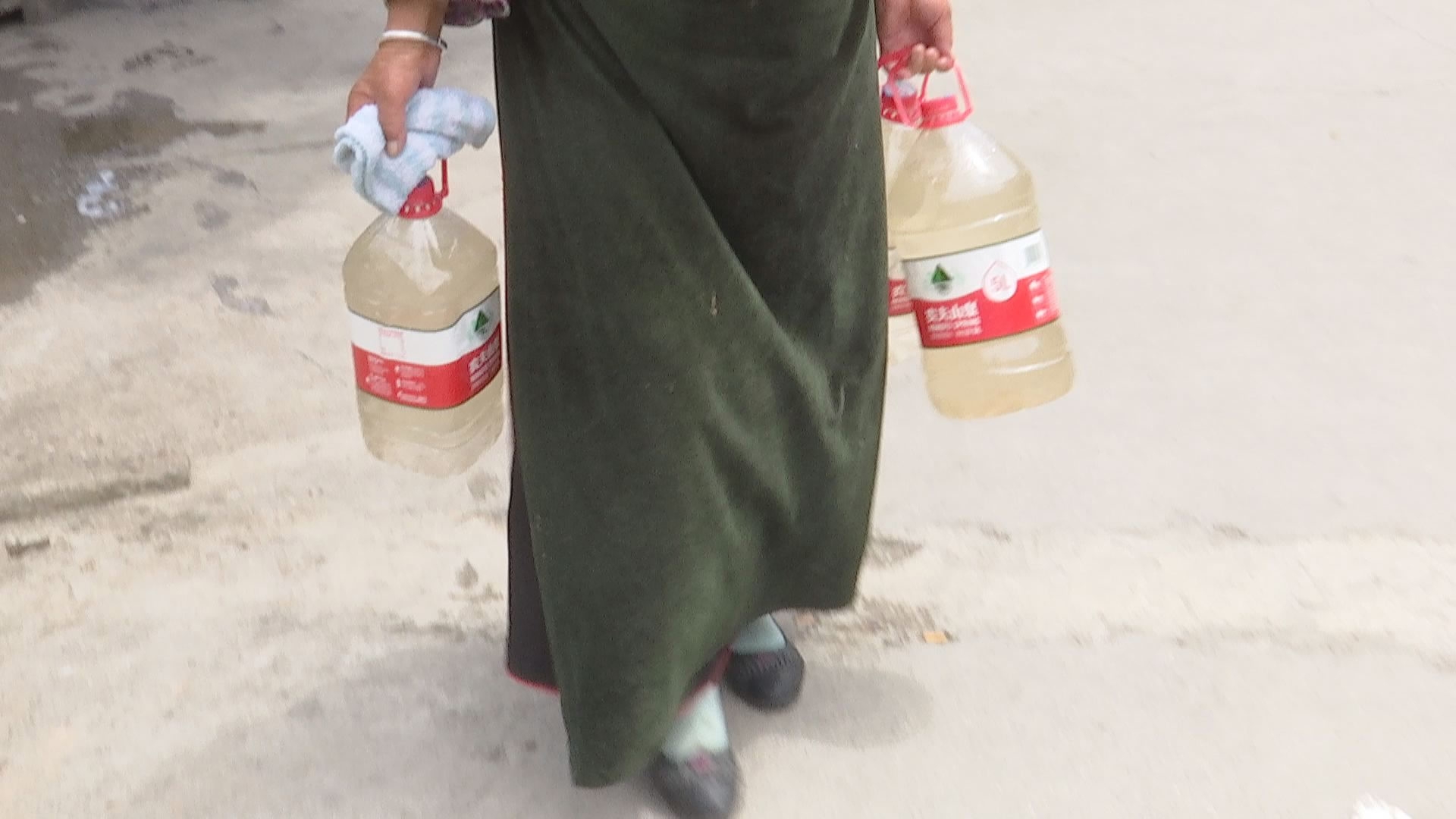
China
23:03, 11-Aug-2017
Water quality safe after quake in UNESCO heritage spot
By CGTN's Wu Guoxiu, Liu Yang and Hu Ying

Drinking water around the quake-hit area in China’s southern scenic spot Jiuzhaigou does not look clear, but authorities assure that it is indeed safe for consumption.
While there's no change in where drinking water comes from, there's a change in how to get it. Fo Xiang has to bring water back to a temporary home after the quake. She worries about the water quality.

A resident carries tapped water in Jiuzhaigou, Sichuan Province, after deadly earthquake. /CGTN photo
A resident carries tapped water in Jiuzhaigou, Sichuan Province, after deadly earthquake. /CGTN photo
She says, "We usually drink tap water here. It used to be very clear, but it became a bit turbid after the earthquake. We will boil it before we drink it."
Comparing with bottled water, water tapped from Jiuzhaigou is obviously dirtier.
The rivers have also darkened. Local residents complain that the bottom of the river is no longer visible.

Rivers blackened by earthquake in Zhangzha village, Jiuzhaigou County /CGTN photo
Rivers blackened by earthquake in Zhangzha village, Jiuzhaigou County /CGTN photo
To address residents’ concerns, local authorities have taken samples from quake-hit villages. Their lab results look optimistic.
“Our testing these days shows that water quality in the quake-hit area is very safe, even though it doesn't look clear. This area doesn’t have heavy industries, so the water is not likely to be polluted,” said Feng Xiang, monitoring director of Sichuan Environment Monitoring Station.

Testing of water sample from villages in Jiuzhaigou, Sichuan Province, after the earthquake /CGTN photo
Testing of water sample from villages in Jiuzhaigou, Sichuan Province, after the earthquake /CGTN photo
However, the official warns that the biggest threat now is not water quality, but damage to the whole ecological system in the UNESCO heritage spot.
An evaluation on ecological damage will commence soon.
1314km

SITEMAP
Copyright © 2018 CGTN. Beijing ICP prepared NO.16065310-3
Copyright © 2018 CGTN. Beijing ICP prepared NO.16065310-3